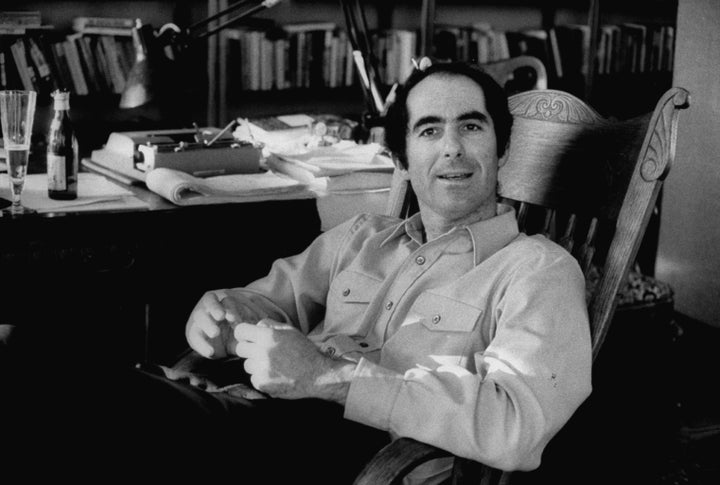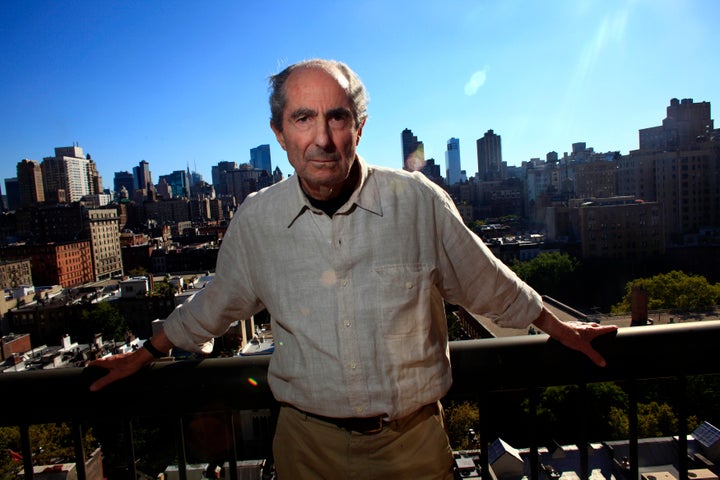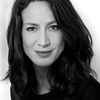
Like so many early adolescents in the latter half of the American Century, I hid under the bedspread with that canary-yellow paperback of famous self-gratification. The first copy of Portnoy’s Complaint I read belonged to my grandparents, northeastern Jews 20 years older than Philip Roth. The yellow spine shouted its presence on the bookshelf in their bedroom, lodged between white hardbacks by Abba Eban and Groucho Marx, as tonally mismatched in their lives in which their great romance was defined by winning dance competitions rather than embarrassments of the flesh, the relevant parts of which were exclusively referred to as “down there.”
My “down there” was made in biological opposition to Roth’s. And my relationship to my own womanhood meant my relationship with his books careened from fascination to fury, finally landing in a place of deep commitment and occasionally unreserved reverence.
Sure, I too hungered for pleasure, but not like Alexander Portnoy, not like that. Was that what it meant to be a man? And was this what it meant to write books that would be venerated by millions?
I was hooked, but not because I was mirrored. I was Jewish, I masturbated, I raged at the world. But Portnoy ― and even more, the man who wrote him ― was as exotic and discomfiting to me as a figure from another world. He was laying bare a primacy that wasn’t mine. And somehow, back then, I knew there was value in that. Women were objects of Portnoy’s lust, sure, but the lust was the point.
Still, it was hard to love Philip Roth as a girl coming of age in a certain age. I wanted to see myself as a subject, not an object. I wanted to believe I could be both a book’s protagonist and its author. I kept reading the early work, but my fascination waned, replaced by frustration. Instead of reading newer Roth I began arguing about him. With men. With women of a different generation who found my feminist diatribes tiresome.
“It was hard to love Philip Roth as a girl coming of age in a certain age. I wanted to see myself as a subject, not an object”
It felt like a betrayal to be excluded from the attention of this venerated Jew —perhaps knowing that I was perhaps never thin enough, tall enough or shiksa enough to be objectified while railing against the objectification. It was what was wrong with men. It was what was wrong with publishing. It was what was wrong with the larger culture.
As long as his books were so corporeally rooted in his unapologetic lust and resentment of women, there was no place for me, it felt, but to resent him right back. It didn’t matter to me that this relationship to women was his subject, which he approached knowingly. I skipped over the headier books from the ’80s, committing to what I’d declared, regardless of how they would have complicated my thinking, my relationship with his writing.
I was, after all, a product of the university culture of the ’90s that he was to later pillory in The Human Stain, the final work in his American Trilogy. The subject-object dyad, and how women were represented in narrative, reigned over our term papers, our coffeehouse discourse. We weren’t wrong. But too often we exasperatingly failed to understand literature in our assessment of it. To attempt to embody someone else’s desire, no matter how puerile it might be, is how artists expose truth that humanity hides away. To enter a consciousness that may be reprehensible to you is how we know each other’s beating, bloody hearts.
“To attempt to embody someone else’s desire, no matter how puerile it might be, is how artists expose truth that humanity hides away.”
Like many women, his heart repelled me back then. I hadn’t internalized its own critique, its ironies; its curiosities hadn’t become mine. Of course, he wasn’t writing these books for me. And I had not encountered how fully and kaleidoscopically he had excavated the self — his own self, the self of a certain man, a certain consciousness — having skipped over his books from the ’80s, most importantly The Counterlife. Instead, I read Claire Bloom’s brutal memoir of their relationship, Leaving a Doll’s House, with schadenfreude. You don’t get to treat women this way and not be exposed for it, I thought.
And then I read American Pastoral, the first book in the trilogy. It wasn’t just that he escaped from his body and his psyche into the world beyond, in this case, a deeply researched and even more closely observed epic looking back at 60-odd years of a family moving from the stinking tanneries of Newark’s glove industry into the turmoil of the suburban ’60s. In a somewhat minor character he gave me Merry Levov, a deeply flawed girl whose own rage was such that she would blow up a gas station in murderous and misguided protest of the bankruptcy of the political and cultural tornado she inhabited. I was not her, a self I could have become; had I been born a generation prior, I may have detonated such explosives. I could exist in his books, and in his thinking, as an actor, not just a body to crave or ignore. It was a book that changed how I saw history, and myself.

From then on, I read and debated each book as it was published ― the ruminations, hilarious and devastating, on death, failure, need, the 20th century itself ― filling in what I had missed whenever I could find a musty copy in a used bookstore. In this patchy game of catch-up, I overlooked what to me would be the most essential work of all. I was insisting a friend read my mentor Ellen Willis’ personal essay called “Next Year in Jerusalem,” about traveling to Israel as a Queens-born atheist feminist to encounter her brother’s absorption into ultra-orthodox Judaism there. “So, it’s basically a non-fiction Counterlife,” he said. “No, no, it’s written by a feminist, it’s not like Roth at all,” I responded, before admitting that I’d never read the book.
The next day he handed me his beloved copy. It was the first book he lent me, and I have long since returned all the others that were to follow, but this I have greedily hoarded for 15 years.
The Counterlife is populated with typical Roth characters and fodder: his frequent narrator Nathan Zuckerman and his brother, affairs, collapsing marriages, wrestling with Jewishness. And yet the astonishing scope of its imagination and ambition as an exercise in refraction — of the self, of family, of history, of desire — renders it unlike anything else. It shapeshifts throughout three counterlives — none of them entirely distinct from the other — in which different lives are lived, different histories are exposed, different characters embody and bury the others, projecting through a prism that blindingly continuously redefines the lives of its characters.
If it were written by a woman, about female characters, it may well be considered among the most formidable feminist novels. Indeed, it shares far more with Virginia Woolf’s convention-shattering than any of Roth’s fellow (now) dead white men. But while Woolf challenged the form of the novel to challenge the limitations of gender itself — shifting Orlando from female to male, for example — the Counterlife fixates on deeper and more nuanced terrain, about not who we get to be, but what it means to be, full stop.
“If The Counterlife were written by a woman, about female characters, it may well be considered amongst the most formidable feminist novels.”
Perhaps this book provokes my profound admiration and affinity because of where I was in my own life when it was so meaningfully pressed into my hand. It was a time when complexity meant more to me than it ever had before, when I was confronting the refractions of my own heart, and what it meant to imagine erasing prescribed boundaries within my own life. But those notions, within my own consciousness, remain deeply feminist ones.
The book’s fixation on mortality and impotence would define much of the last act of Roth’s writing, a marathon he continued to sprint until 2012. Those books largely return to his first act, bookending the preoccupations of his young male organ with his uncooperative and undesirable aging flesh. Young women as objects, to thwart or relent, but never again to fully satisfy.
Lisa Halladay devotes the first half of her recent novel Asymmetry to conjuring one of those real-life young women who attempted to navigate Roth’s increasing solitude and decrepitude. Roth said Halladay “got him,” indeed, that quotation is how his New York Times obituary ends, conferring his approval on the writer who made his perennial object the subject. Perhaps, in part, because her protagonist never tries to accept the realities of the book’s Roth figure, for better or for worse.
Roth, after all, never told us how to fix men. Only that what lies deep inside them, and all of us, is a pulsing reality to be reckoned with, instead of hidden shamefully under a bedspread. Which is what literature, in its — and his —finest form, forces us to do.
Lauren Sandler is a journalist and the author of Righteous, One and Only and a forthcoming book about a year in the life of a young homeless mother.
